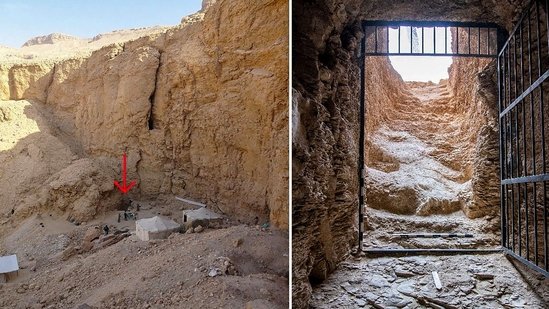Archaeologists have uncovered the long-lost tomb of King Thutmose II near Luxor, marking the first discovery of a pharaonic royal burial site in over a century, Egypt’s Ministry of Tourism and Antiquities announced on Tuesday.
The ancient tomb, situated west of the famed Valley of the Kings, belonged to Thutmose II, a ruler of Egypt’s 18th dynasty. This significant find is the first royal tomb discovery since that of King Tutankhamun in 1922, the ministry stated.
A joint Egyptian-British excavation team identified the site through alabaster vessels inscribed with the names of King Thutmose II and his wife, Queen Hatshepsut—one of the few female rulers in ancient Egyptian history. Additionally, archaeologists uncovered fragments of the king’s funerary furniture, along with remnants of painted mortar featuring blue inscriptions, yellow stars, and religious texts.
Despite the historical importance of the discovery, the tomb has suffered extensive damage. The ministry noted that flooding shortly after Thutmose II’s death had severely impacted its preservation. Many of its original contents appear to have been moved over time, and efforts are now underway to recover them.
This groundbreaking find sheds new light on the legacy of Egypt’s 18th dynasty and adds a new chapter to the rich history of the Valley of the Kings.









